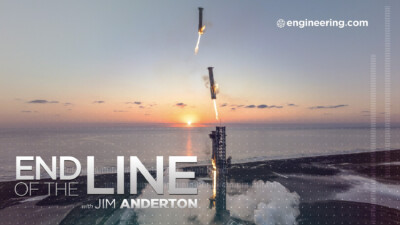Bio confirms Musk dealt with both sides…and reveals top secret submarine drones.

UPDATED September 30, 2023 after new information came to light in the biography. (Original article was based on a pre-publication excerpt).
“As Ukrainian submarine drones strapped with explosives approached the Russian fleet, they lost connectivity and washed ashore harmlessly,” Isaacson writes.
We knew Musk had cooperated with Ukraine and its allies, but that he had cooperated with Russia has made Ukraine’s leaders hopping mad,
been picked up on every major news source and blown up the Internet.
Musk’s Entry into the War
Starlink is a low Earth orbit satellite network. Its 4,500 satellites are made, launched and maintained by SpaceX, wholly owned by Musk. With Ukraine’s digital infrastructure damaged by Russians, the country’s digital minister, Mykhailo Fedorov, issued a desperate tweet to Musk, who quickly granted Starlink satellite Internet coverage to large parts of Ukraine. He also agreed to deliver millions of dollars of Starlink terminals, all for free.
It was an act of pity for a nation under attack but Musk had no intention of
supporting offensive operations.But when Ukraine launched its counteroffensive, Musk was beseeched by the Ukraine military to extend coverage to areas they were fighting to get back. They wanted to first regain territory Russia had seized in 2022 but vowed not to stop until they got back Donbas and Crimea, under Russian control since 2014. To Musk, it looked as if Ukraine had turned from being a defender to an aggressor.
Musk, an avid reader of military history, maintains that Russia has rights to Crimea, saying in a tweet last October that
Crimea is formally part of Russia and it has been since 1783. That, along with other statements made, quickly drew the ire of Ukraine
officials.
Fiona Hill, a former National Security Council official in an interview with Politico, dismissed Musk’s view of ownership of Crimea and Ukraine as the mistaken view of Russian leader Vladimir Putin.
Musk’s support of Ukraine began to wane. Musk, a man who wanted only peace, was in a conundrum. All he wanted to do was to help people connect to the Internet.
“How am I in this war?,” Musk wondered to Isaacson. “Starlink was not meant to be involved in wars. It was so people could watch Netflix and chill and get online for school and do good peaceful things not drone strikes.”
Musk refused Starlink activation over contested areas in the South and East
of Ukraine, including the Donbas region.
A Nuclear Response to a Drone Attack?
Other sources Isaacsons account of top level government officials from U.S,
Ukraine and Russia getting increasingly anxious about Musk’s role in the
conflict. Anatoly Antonov, Russian ambassador to the U.S., General Mark Milley,
chairman of the joint chiefs and Jake Sullivan, U.S. president Joe Biden’s
national security advisor, held a conference call with Musk to “address
anxieties.”
Ukraine had been mounting bold attacks with exploding drone boats and
missiles and had already forced Russia’s Black Sea fleet to seek refuge in
Sevastopol on the Crimean peninsula. The next attack was to be with 6 top
secret remote controlled submarine packed with explosives. Isaacson said that
Musk was briefed on the submarines and their use in an impending attack on the
Black Fleet. But Musk had been warned by the Russian ambassador that such an
attack by Ukraine would provoke a nuclear response.
“There was an emergency request from government authorities to activate Starlink all the way to Sevastopol,” Musk posted on X (formerly Twitter). “The obvious intent being to sink most of the Russian fleet at anchor. If I had agreed to their request, then SpaceX would be explicitly complicit in a major act of war and conflict escalation.”
To avert a nuclear war, Musk secretly turned off Starlink coverage within a
100 km from Crimea’s coastline, says Isaacson. The remote control submarines,
which depended on Starlink communication, were to flounder harmlessly.
But Was Starlink Ever Activated in Crimea?
The claim that Ukrainian submarines actually had Starlink connectivity as as they approached the Russian fleet
in Sevastopol needs to be examined in light of Musk’s unwillingness to turn
StarLink coverage on over any part of Crimea.
After the book’s publication, Musk tweet a correction to Isaacson, which the author acknowledged: Starlink service was
never active over Crimea.
Did You Say Remote Controlled Submarine?

Isaacson refers to a submarine drone vessel, AKA, uncrewed underwater vessel or UUW, that needed to be connected. Up until recently, all we knew
about was Ukraine’s drone vessels,
AKA uncrewed surface vessels or USVs. Ukraine’s submarine drone, the Marichka, was only revealed
publicly by Ukraine’s government two weeks ago (August 22). In Isaacson
biography, it was revealed that Federov had briefed Musk about the Marichka
before the rest of the world and perhaps even before Ukraine’s military allies.
How Would a Submarine Receive a Satellite Signal?
Ukrainian’s surface drones have distinctive satellite antenna, quite likely a Starlink antenna, but the Marichka reveals no such device on the few photos and video we have seen. Even if it had a popup satellite antenna, it could only be used if it was above water, and that would give away its position.
Water is a wall for satellite signals. A submarine operating underwater is cut off from aerial and satellite communication. Attempts to break through the wall is an active area of research and has led to some experimental success, such as TARF (translational acoustic-RF communication) from MIT. Could the Marichka, made for between $400K and $450K, have such breakthrough technology?

To date, there has been no independent verification of the remote controlled
submarines washing up ashore. Pictures of a USV that had lost control and washed
up ashore were posted on X in September, however.
Reference
CNN Exclusive: ‘How
Am I In This War?’ New Musk Biography Offers Fresh Details About the Billionaires’s Ukraine
Dilemma, Sean Lyngaas, CNN, September 8, 2023



